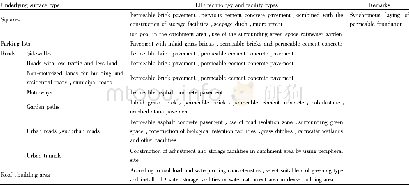《Table 1–Comparison of the Brunauer–Emmett–Teller (BET) surface area, pore size and pore volume of t
 提示:宽带有限、当前游客访问压缩模式
提示:宽带有限、当前游客访问压缩模式
本系列图表出处文件名:随高清版一同展现
《Facile synthesis of graphitic carbon-nitride supported antimony-doped tin oxide nanocomposite and its application for the adsorption of volatile organic compounds》
To study the adsorption capacity of ATO nanoparticles on g-CN/ATO,we further studied the surface properties like BET surface area,pore volume and pore size of the samples using nitrogen adsorption–desorption analysis(Table 1).N2adsorption–desorption analysis indicates the nature of the curves are of Type IV isotherm(Fig.5),the characteristic feature of which is Type H3 hysteresis loop associated with capillary condensation taking place in the mesopores due to aggregates of plate-like g-CN and ATO nanoparticle in composite g-CN/ATO.Three well-distinguished regions of the adsorption isotherm(Fig.5)are evident:(i)monolayer–multilayer adsorption,(ii) capillary condensation on the pore walls,and(iii)multilayer adsorption on the outer particle surfaces.Sharp increase in adsorbate volume at low relative pressure(P/P0)indicates the presence of microspores along with mesopores.The capillary condensation occurs at a higher relative pressure(P/P0~0.98)(Sing,1985) .In addition,the pore size distribution calculation based on the Barrett–Joyner–Halenda(BJH)method using adsorption branch of isotherm(Fig.5),gCN/ATO hybrid nanocomposite possess larger mesopores with a pore diameter of 34.2 nm as compared to ATO nanoparticles(18.4 nm)and g-CN sheet(25.9 nm)shown in Table 1.The high measured pore size of ATO nanoparticles indicates these particles are actually grain clusters or polycrystals(Zhou et al.,2009).The results illustrate that the BET surface area of g-CN/ATO composite is significantly higher than those of bare ATO and g-CN.The larger surface area of the hybrid nanocomposite is attributed to the exfoliation of stalked g-CN sheets and less aggregate of ATO nanoparticles in between the sheets.This increased the porosity of the hybrid nanocomposite significantly(Wang et al.,2014b).
| 图表编号 | XD0052052400 严禁用于非法目的 |
|---|---|
| 绘制时间 | 2019.05.15 |
| 作者 | Devi Prashad Ojha、Jun Hee Song、Han Joo Kim |
| 绘制单位 | Department of Convergence Technology Engineering, Chonbuk National University、Department of Convergence Technology Engineering, Chonbuk National University、Department of Convergence Technology Engineering, Chonbuk National University、Eco-friendly Machine |
| 更多格式 | 高清、无水印(增值服务) |





